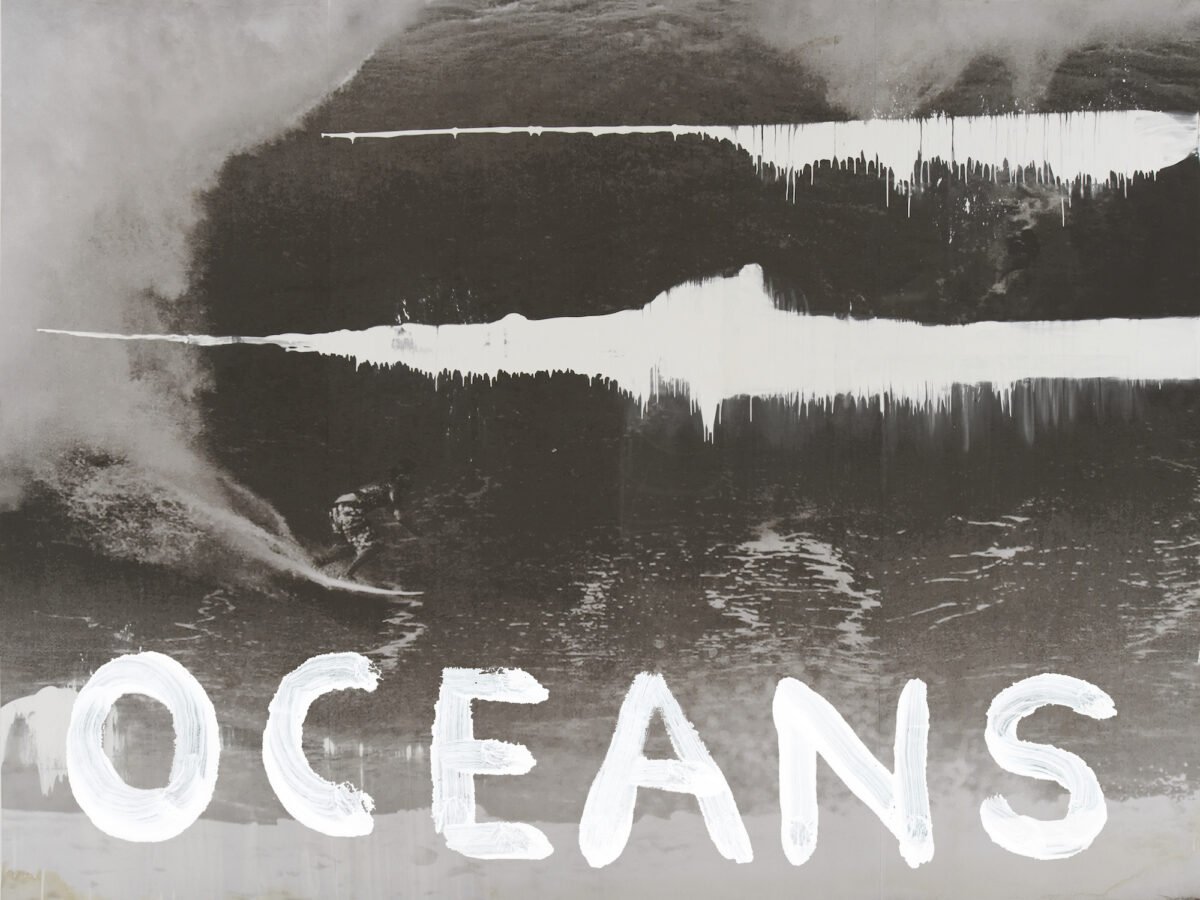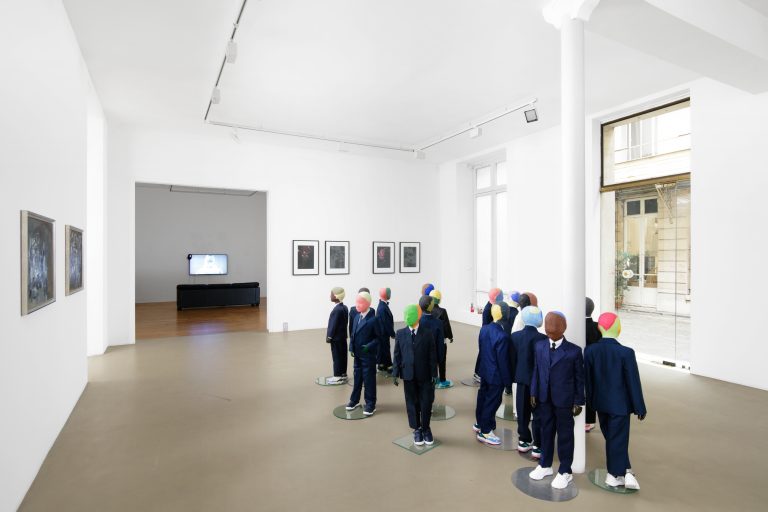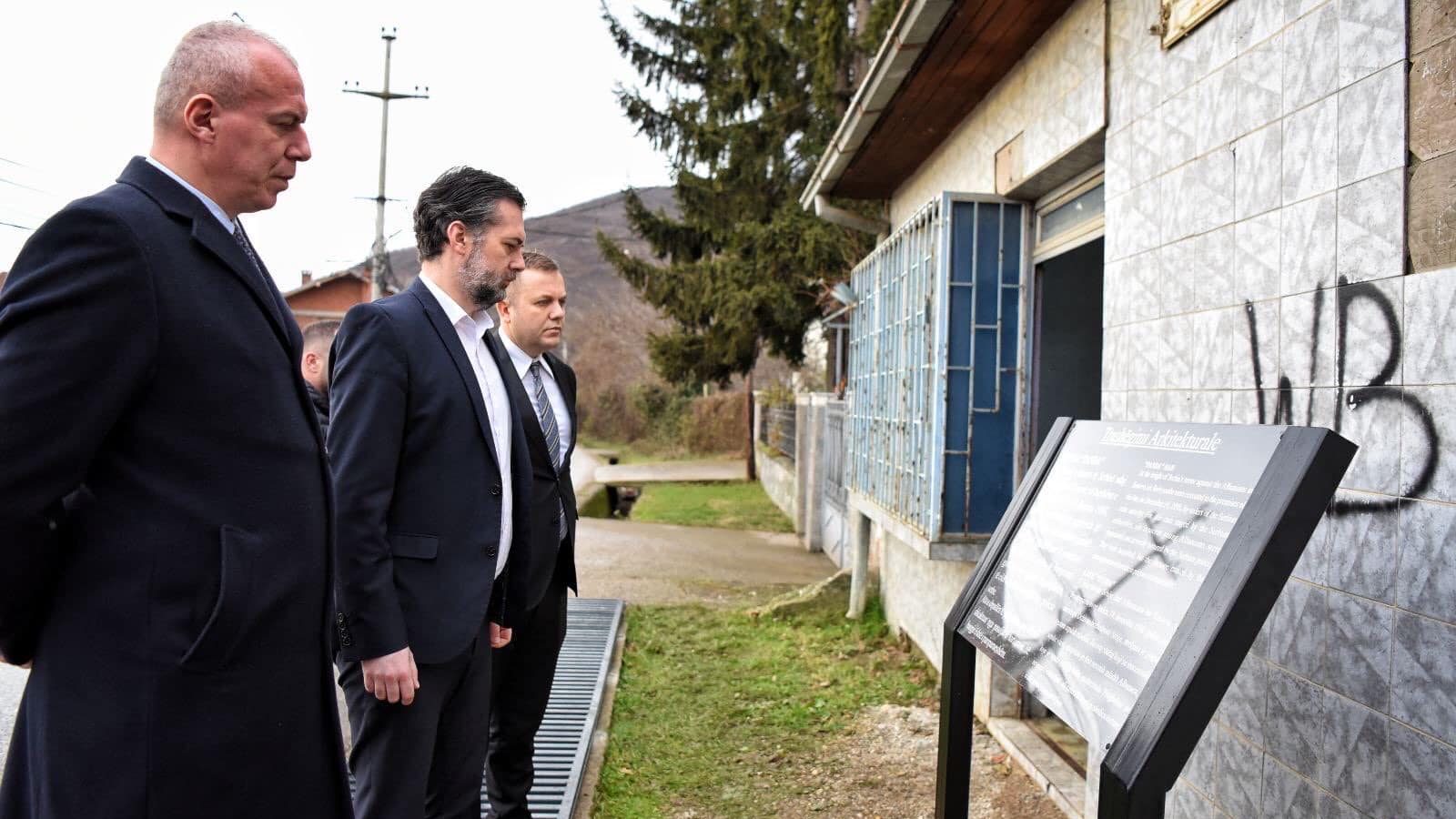Otazniky
1969 - Painting (Painting)
29 x 66 cm
Julius Koller
In its stringency, obsession and peculiarity, the oeuvre of Julius Koller is one of the most idiosyncratic and consistent in European art since the 1960s. Yet Koller is not only a seminal figure in the history of the neo- and post-avant-garde; his work has long been a critical inspiration for artists and intellectuals. In the most recent past, Koller’s concepts of the Anti-Happening, the Anti-Picture, the Universal-cultural Futurological Operation (U.F.O.), his actions, objects, texts and the enormous referential archive he built up, have attracted growing interest on the part of a broader art public. From around 1960, in response to the modernist mainstream in Slovak art, Julius Koller began to develop his aesthetic position of the “antihappening.” His strategy consists in using real objects and everyday life as the predefined program for an aesthetic operation: from 1965, in texts rubberstamped on paper that refer to the context of the “anti-happening,” and then in 1967/1968 in pictures for which Koller used white latex paint instead of oils and which saw the first appearance of the question mark—the symbol of Koller’s brands of naming, or “making known,” that was later to undergo many mutations in various media and states of aggregation. The “invitation cards for an idea”—as Koller called the text works relating to the “anti-happenings”—and the palimpsests and serial arrangements of the “anti-pictures” set themselves apart from the academicism of Modernism in more than just formal terms. Koller foregoes every form of technical mastery. The “anti-pictures” are amateurish in style, ensuring that they fulfill their task, defined by Koller as “engaging rather than arranging.” Julius Koller was born in 1939 in Piestany, Slovakia. He died in 2007 in Bratislava.
Colors:
Related works sharing similar palette

© » KADIST
Cross Lypka
2022tombs and ignitions is a collaborative ceramic sculpture by artists Tyler Cross and Kyle Lypka...

© » KADIST
Ahmet Ögüt
2022Monuments of the Disclosed by Ahmet Ögüt is an NFT series of digital monuments to whistleblowers...

© » TWOCOATSOFPAINT
Afire: Christian Petzold’s combustible feast – Two Coats of Paint Afire (directed by Christian Petzold), 2023, Leon on the beach (Thomas Schubert) , courtesy of Janus Films Contributed by Jonathan Stevenson / Instability hovers on several fronts – environmental, political, economic – and German filmmaker Christian Petzold manifests his concern about it with remarkable astuteness...

© » KADIST
David Maljkovic
2005This video was filmed in the middle of the Zagreb fair which took place in the 1960s and 1970s under the rule of Tito...

© » ARTS EQUATOR
Criticism and Tears: The Emotional is Political in the Marcos State | ArtsEquator Skip to content When a film taps on emotions to distort historical facts, criticism that uses a rational, adversarial voice, above the work and the audiences who enjoy it may fail to dislodge the emotive power of the work’s narrative...

© » KADIST
The Feeling Sense An illustrated conversation with Leslie Shows and Ross Simonini What is the relationship between art and the language that surrounds it? Must an artwork be explained, decoded, or carry a fixed meaning? When you approach an object, where in your body do you feel it? Does it affect you in ways you cannot verbally describe? The “Feeling Sense” is the perceptual capacity of any living organism to encounter their environment...

© » SLASH PARIS
Group show — Tous les jours — Galerie Chantal Crousel — Exposition — Slash Paris Connexion Newsletter Twitter Facebook Group show — Tous les jours — Galerie Chantal Crousel — Exposition — Slash Paris Français English Accueil Événements Artistes Lieux Magazine Vidéos Retour Group show — Tous les jours Exposition Dessin, photographie, sculpture, techniques mixtes.....

© » KADIST
Zach Reini
2015Particularly shaped by his own youth in the 1990s, his recent works have incorporated things like a marijuana leaf, a dragon-emblazoned chain wallet, metal grommets, and the ubiquitous (in the 90s) Stussy symbol...

© » FAD MAGAZINE
Art Basel and Parley for the Oceans launch partnership at Art Basel Miami Beach 2023 - FAD Magazine Skip to content By Mark Westall • 4 December 2023 Share — Art Basel and Parley for the Oceans have announced a partnership and launch ‘Art for the Oceans’, a global fundraising initiative to protect Oceans, Climate and Life against plastic pollution, climate change and biodiversity loss...

© » THEARTNEWSPER
New York governor seeks removal of problematic images of Native Americans Art market Museums & heritage Exhibitions Books Podcasts Columns Technology Adventures with Van Gogh Search Search Museums & Heritage news New York governor seeks removal of problematic images of Native Americans Kathy Hochul has proposed removing certain imagery from the state capitol in Albany Gareth Harris 9 February 2024 Share Kathy Hochul, the governor of New York Mark Getman Kathy Hochul, the governor of New York, has proposed removing depictions of Native Americans from New York’s State Capitol building in Albany...

© » ART & OBJECT
Art Institute of Chicago Workers Ratify First Contract | Art & Object Skip to main content Subscribe to our free e-letter! Webform Your Email Address Role Art Collector/Enthusiast Artist Art World Professional Academic Country USA Afghanistan Albania Algeria American Samoa Andorra Angola Anguilla Antarctica Antigua & Barbuda Argentina Armenia Aruba Ascension Island Australia Austria Azerbaijan Bahamas Bahrain Bangladesh Barbados Belarus Belgium Belize Benin Bermuda Bhutan Bolivia Bosnia & Herzegovina Botswana Bouvet Island Brazil British Indian Ocean Territory British Virgin Islands Brunei Bulgaria Burkina Faso Burundi Cambodia Cameroon Canada Canary Islands Cape Verde Caribbean Netherlands Cayman Islands Central African Republic Ceuta & Melilla Chad Chile China Christmas Island Clipperton Island Cocos (Keeling) Islands Colombia Comoros Congo - Brazzaville Congo - Kinshasa Cook Islands Costa Rica Croatia Cuba Curaçao Cyprus Czechia Côte d’Ivoire Denmark Diego Garcia Djibouti Dominica Dominican Republic Ecuador Egypt El Salvador Equatorial Guinea Eritrea Estonia Eswatini Ethiopia Falkland Islands Faroe Islands Fiji Finland France French Guiana French Polynesia French Southern Territories Gabon Gambia Georgia Germany Ghana Gibraltar Greece Greenland Grenada Guadeloupe Guam Guatemala Guernsey Guinea Guinea-Bissau Guyana Haiti Heard & McDonald Islands Honduras Hong Kong SAR China Hungary Iceland India Indonesia Iran Iraq Ireland Isle of Man Israel Italy Jamaica Japan Jersey Jordan Kazakhstan Kenya Kiribati Kosovo Kuwait Kyrgyzstan Laos Latvia Lebanon Lesotho Liberia Libya Liechtenstein Lithuania Luxembourg Macao SAR China Madagascar Malawi Malaysia Maldives Mali Malta Marshall Islands Martinique Mauritania Mauritius Mayotte Mexico Micronesia Moldova Monaco Mongolia Montenegro Montserrat Morocco Mozambique Myanmar (Burma) Namibia Nauru Nepal Netherlands Netherlands Antilles New Caledonia New Zealand Nicaragua Niger Nigeria Niue Norfolk Island Northern Mariana Islands North Korea North Macedonia Norway Oman Outlying Oceania Pakistan Palau Palestinian Territories Panama Papua New Guinea Paraguay Peru Philippines Pitcairn Islands Poland Portugal Puerto Rico Qatar Romania Russia Rwanda Réunion Samoa San Marino Saudi Arabia Senegal Serbia Seychelles Sierra Leone Singapore Sint Maarten Slovakia Slovenia Solomon Islands Somalia South Africa South Georgia & South Sandwich Islands South Korea South Sudan Spain Sri Lanka St...

© » KADIST
Javier Castro
2012In the film La Edad de Oro (The Golden Age) Javier Castro asks several children to describe what they want to be when they grow up and what their best career option is in Cuba...







